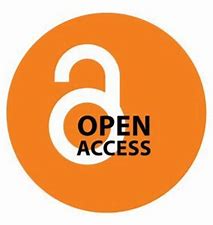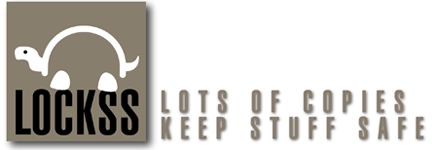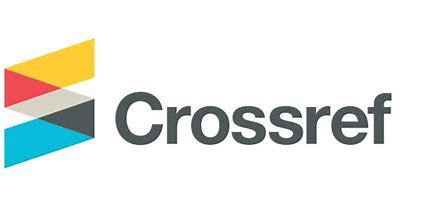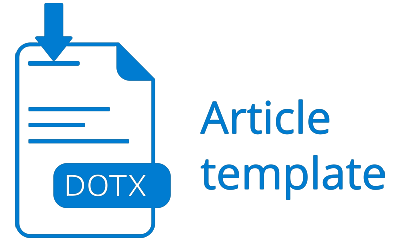- » Focus and Scope
- » Section Policies
- » Peer Review Process
- » Publication Frequency
- » Open Access Policy
- » Archiving
- » Publication Ethics and Malpractice Statement
- » Policy of Screening for Plagiarism
- » References management
- » Plagiarism Policy
- » Posting Your Article Policy
Focus and Scope
Didascein Journal focuses on facilitating researchers, scholars, teachers to publish original research articles.
The Scopes of the Journal are:
- English Education
- English Literature
- English Linguistics.
Section Policies
Articles
Peer Review Process
The submitted manuscript is first reviewed by an editor. It will be evaluated in the office whether it is suitable with our focus and scope or has a major methodological flaw. Each manuscript will be sent to reviewers anonymously (Single Blind Review). Reviewers' comment are then sent to corresponding author to take the necessary actions and responses. The decision of the revised manuscript will be then evaluated in editorial board meeting to make final decision for accepted manuscript to be published.
Publication Frequency
The journal will be issued twice in a year, March and September.
Open Access Policy
Didascein Journal provides immediate open access to its content on the principle that making research freely available to the public supports a greater global exchange of knowledge.
All published articles in this journal can immediately and freely accessed online with no cost.

Archiving

Publication Ethics and Malpractice Statement
Section A: Publication and authorship
• All submitted papers are subject to strict peer-review process by at least two international reviewers that are experts in the area of the particular paper.
• Review process are blind peer review.
• The factors that are taken into account in review are relevance, soundness, significance, originality, readability and language.
• The possible decisions include acceptance, acceptance with revisions, or rejection.
• If authors are encouraged to revise and resubmit a submission, there is no guarantee that the revised submission will be accepted.
• Rejected articles will not be re-reviewed.
• The paper acceptance is constrained by such legal requirements as shall then be in force regarding libel, copyright infringement and plagiarism.
• No research can be included in more than one publication.
Section B: Authors’ responsibilities
• Authors must certify that their manuscripts are their original work.
• Authors must certify that the manuscript has not previously been published elsewhere.
• Authors must certify that the manuscript is not currently being considered for publication elsewhere.
• Authors must participate in the peer review process.
• Authors are obliged to provide retractions or corrections of mistakes.
• All Authors mentioned in the paper must have significantly contributed to the research.
• Authors must state that all data in the paper are real and authentic.
• Authors must notify the Editors of any conflicts of interest.
• Authors must identify all sources used in the creation of their manuscript.
• Authors must report any errors they discover in their published paper to the Editors.
Section C: Reviewers’ responsibilities
• Reviewers should keep all information regarding papers confidential and treat them as privileged information.
• Reviews should be conducted objectively, with no personal criticism of the author
• Reviewers should express their views clearly with supporting arguments
• Reviewers should identify relevant published work that has not been cited by the authors.
• Reviewers should also call to the Editor in Chief’s attention any substantial similarity or overlap between the manuscript under consideration and any other published paper of which they have personal knowledge.
• Reviewers should not review manuscripts in which they have conflicts of interest resulting from competitive, collaborative, or other relationships or connections with any of the authors, companies, or institutions connected to the papers.
Section D: Editors’ responsibilities
• Editors have complete responsibility and authority to reject/accept an article.
• Editors are responsible for the contents and overall quality of the publication.
• Editors should always consider the needs of the authors and the readers when attempting to improve the publication.
• Editors should guarantee the quality of the papers and the integrity of the academic record.
• Editors should publish errata pages or make corrections when needed.
• Editors should have a clear picture of a research’s funding sources.
• Editors should base their decisions solely one the papers’ importance, originality, clarity and relevance to publication’s scope.
• Editors should not reverse their decisions nor overturn the ones of previous editors without serious reason.
• Editors should preserve the anonymity of reviewers.
• Editors should ensure that all research material they publish conforms to internationally accepted ethical guidelines.
• Editors should only accept a paper when reasonably certain.
• Editors should act if they suspect misconduct, whether a paper is published or unpublished, and make all reasonable attempts to persist in obtaining a resolution to the problem.
• Editors should not reject papers based on suspicions, they should have proof of misconduct.
• Editors should not allow any conflicts of interest between staff, authors, reviewers and board members.
Policy of Screening for Plagiarism
Papers submitted to JRSSH will be screened for plagiarism using CrossCheck/iThenticate plagiarism detection tools. Journal Research of social science and Humanities will immediately reject papers leading to plagiarism or self-plagiarism.
Before submitting articles to reviewers, those are first checked for similarity/plagiarism tool, by a member of the editorial team. The papers submitted to Journal Research of social science and Humanities must have a similarity level of less than 15%.
Plagiarism is the exposing of another person’s thoughts or words as though they were your own, without permission, credit, or acknowledgment, or because of failing to cite the sources properly. Plagiarism can take diverse forms, from literal copying to paraphrasing the work of another. In order to properly judge whether an author has plagiarized, we emphasize the following possible situations:
- An author can literally copy another author’s work- by copying word by word, in whole or in part, without permission, acknowledge or citing the original source. This practice can be identified by comparing the original source and the manuscript/work who is suspected of plagiarism.
- Substantial copying implies for an author to reproduce a substantial part of another author, without permission, acknowledge or citation. The substantial term can be understood both in terms of quality as quantity, is often used in the context of Intellectual property. Quality refers to the relative value of the copied text in proportion to the work as a whole.
- Paraphrasing involves taking ideas, words or phrases from a source and crafting them into new sentences within the writing. This practice becomes unethical when the author does not properly cite or does not acknowledge the original work/author. This form of plagiarism is the more difficult form to be identified.
References management
Every article accepted by Journal Research of social science and Humanities use references manajemen software. e.g. Mendeley or Zotero
Plagiarism Policy
JRSSH Editorial board recognizes that plagiarism is not acceptable and therefore establishes the following policy stating specific actions (penalties) when plagiarism is identified in an article that is submitted for publication in Journal Research of social science and Humanities.
Definition:
Plagiarism involves the "use or close imitation of the language and thoughts of another author and the representation of them as one's own original work."
Policy:
Papers must be original, unpublished, and not pending publication elsewhere. Any material taken verbatim from another source needs to be clearly identified as different from the present original text by (1) indentation, (2) use of quotation marks, and (3) identification of the source.
Any text of an amount exceeding fair use standards (herein defined as more than two or three sentences or the equivalent thereof) or any graphic material reproduced from another source requires permission from the copyright holder and, if feasible, the original author(s) and also requires identification of the source; e.g., previous publication.
When plagiarism is identified, the Editor in Chief responsible for the review of this paper and will agree on measures according to the extent of plagiarism detected in the paper in agreement with the following guidelines:
Level of Plagiarism
1. Minor: A short section of another article is plagiarized without any significant data or idea taken from the other paper
Action: A warning is given to the authors and a request to change the text and properly cite the original article is made
2. Intermediate: A significant portion of a paper is plagiarized without proper citation to the original paper
Action: The submitted article is rejected and the authors are forbidden to submit further articles for one year
3. Severe: A significant portion of a paper is plagiarized that involves reproducing original results or ideas presented in another publication
Action: The paper is rejected and the authors are forbidden to submit further articles for five years.
It is understood that all authors are responsible for the content of their submitted paper as they all sign the Journal Research of social science and Humanities Copyright Transfer Form. If a penalty is imposed for plagiarism, all authors will be subject to the same penalty.
If a second case of plagiarism by the same author(s) is identified, a decision on the measures to be enforced will be made by the Editorial board (Editor-in-Chief, and Editorial members) with the Chair of the Editor in Chief. The author(s) might be forbidden to submit further articles forever.
This policy applies also to material reproduced from another publication by the same author(s). If an author uses text or figures that have previously been published, the corresponding paragraphs or figures should be identified and the previous publication referenced. It is understood that in case of a review paper or a paper of a tutorial nature much of the material was previously published.
The author should identify the source of the previously published material and obtain permission from the original author and the publisher. If an author submits a manuscript to Journal Research of social science and Humanities with significant overlap with a manuscript submitted to another journal simultaneously, and this overlap is discovered during the review process or after the publications of both papers, the editor of the other journal is notified and the case is treated as a severe plagiarism case. Significant overlap means a use of identical or almost identical figures and identical or slightly modified text for one half or more of the paper. For self-plagiarism of less than one half of the paper but more than one-tenth of the paper, the case shall be treated as intermediate plagiarism. If self-plagiarism is confined to the methods section, the case shall be considered as minor plagiarism.
If an author uses some of his previously published material to clarify the presentation of new results, the previously published material shall be identified and the difference to the present publication shall be mentioned. Permission to republish must be obtained from the copyright holder. In the case of a manuscript that was originally published in conference proceedings and then is submitted for publication in Journal Research of social science and Humanities either in identical or in expanded form, the authors must identify the name of the conference proceedings and the date of the publication and obtain permission to republish from the copyright holder. The editor may decide not to accept this paper for publication.
However, an author shall be permitted to use material from an unpublished presentation, including visual displays, in a subsequent journal publication. In the case of a publication being submitted, that was originally published in another language, the title, date, and journal of the original publication must be identified by the authors, and the copyright must be obtained. The editor may accept such a translated publication to bring it to the attention of a wider audience. The editor may select a specific paper that had been published (e.g. a “historic” paper) for republication in order to provide a better perspective of a series of papers published in one issue of Journal Research of social science and Humanities . This republication shall be clearly identified as such and the date and journal of the original publication shall be given, and the permission of the author(s) and the publisher shall be obtained.
The Journal Research of social science and Humanities layout editor for the Journal is responsible for maintaining the list of authors subjected to penalties and will check that no authors of a submitted paper are on this list. If a banned author is identified, the layout editor will inform the Editor-in-Chief who will take appropriate measures. This policy will be posted on the website with the instructions for submitting a manuscript, and a copy will be sent to the authors with the confirmation email upon initial receipt of their original manuscript. A sentence shall be added to the copyright transfer form to indicate that the author(s) have read the Plagiarism Policy.
Posting Your Article Policy
Understand Journal Research of social science and Humanities article sharing and posting policies for each stage of the article life cycle.
Prior to submission to Journal Research of social science and Humanities
Authors may post their article anywhere at any time, including on preprint servers such as arXiv.org. This does not count as a prior publication.
Upon submission to Journal Research of social science and Humanities
Authors may share or post their submitted version of the article (also known as the preprint) in the following ways:
- On the author’s personal website or their employer’s website
- On institutional or funder websites if required
- In the author’s own classroom use
- On Scholarly Collaboration Networks (SCNs) that are signatories to the International Association of Scientific, Technical, and Medical Publishers’ Sharing Principles (https://www.stm-assoc.org/stm-consultations/scn-consultation-2015/)
Upon acceptance to Journal Research of social science and Humanities
If an author previously posted their submitted version of the article in any of the following locations, he or she will need to replace the submitted version with the accepted version of Journal Research of social science and Humanities . No other changes may be made to the accepted article.
- Author’s personal website
- Author’s employer’s website
- arXiv.org
- Funder’s repository*
- When the article is published, the posted version should be updated with a full citation to the original of Journal Research of social science and Humanities , including DOI. He or she will need to replace the accepted version with the published article version of JRSSH
- The article will be followed by statements on the Journal Research of social science and Humanities copyright notice.
Published by:
English Education Study Program, FKIP Universitas Tridinanti Palembang
Jalan Kapten Marzuki No.2446 Kamboja, Palembang 30129
Telp. (0711) 369751
Email: didascein_journal@univ-tridinanti.ac.id

Didascein (Journal of English Education) by Universitas Tridinanti Palembang is licensed under a Creative Commons Attribution 4.0 International License.
Based on a work at https://www.univ-tridinanti.ac.id/ejournal/index.php/didasceinenglish.




